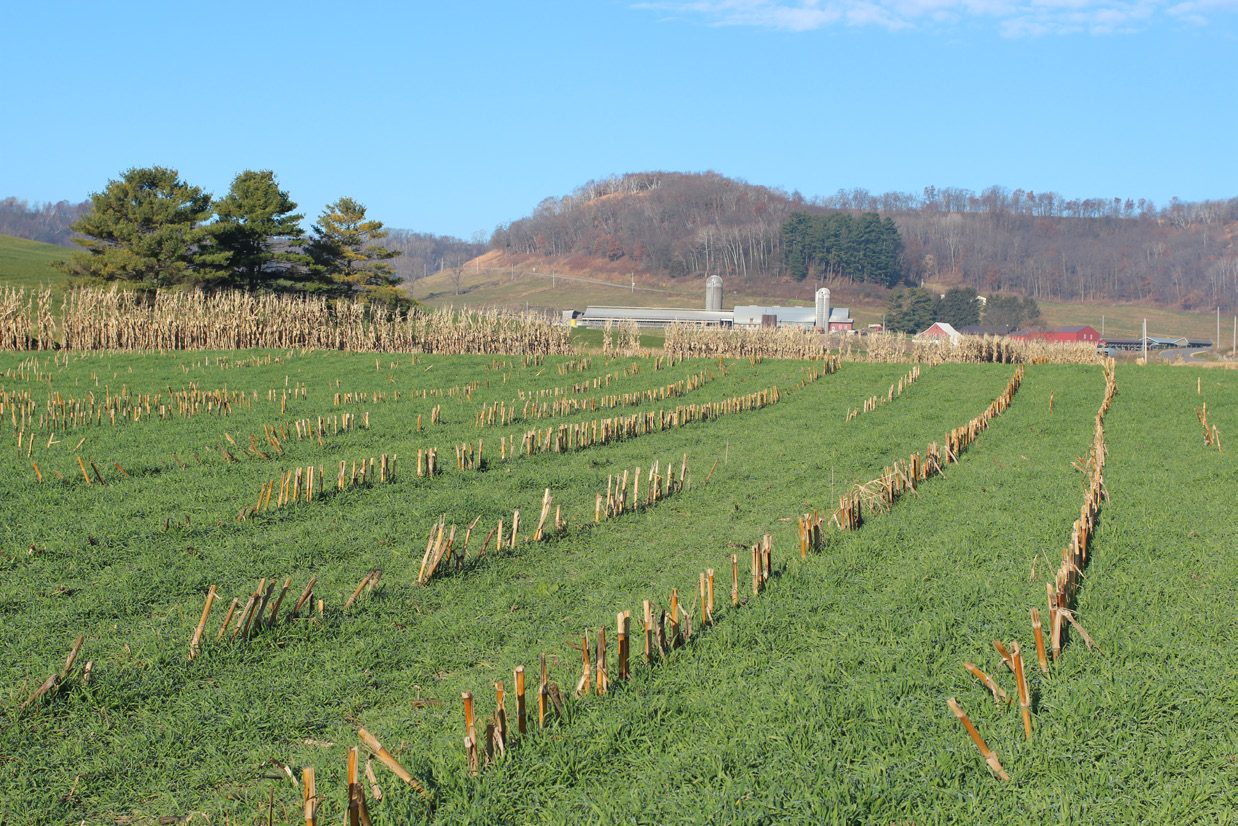Erica Olson, erica.olson@wisc.edu
Fall manure spreading is a common practice in Wisconsin, especially after corn silage harvest. Manure pits need to be emptied in preparation for winter. Manure is a valuable tool for building soil fertility and soil health, but it is important to know and utilize best management practices when spreading and handling manure to ensure the best results for your farm and the environment.
Here are a few reminders as you get ready to make your manure applications this fall.
Look at fields before you spread
Take a walk through the fields you will spread manure on to assess potential risks to water quality. If conditions have been dry, be on the alert for soil cracks and macropores before you spread liquid manure. Macropores are openings, cracks, earthworm burrows or holes in the soil that can be a direct connection from the soil surface to lower depths in the soil including tile lines or near surface ground water. These openings are common in no-till and tile-drained fields. A shallow tillage pass might be enough to break up these paths of preferential flow.
On the other hand, also be on the lookout for saturated fields and wet conditions. Spreading liquid manure to an already wet field may cause runoff, especially if rain is in the forecast. Watch your soil conditions and the weather to consider how your fields will respond.
Wait for the soil to cool below 50 degrees
Microbial activity (the primary driver for nitrogen conversion in the soil) only slows down once soil temperatures reach below 50 degrees. In cooler soils, microbes are less likely to convert organic nitrogen sources from manure into ammonium and ultimately to nitrate. Nitrate nitrogen is not bound to soil particles which makes it mobile and likely to leach into groundwater. This means it will be lost before the next crop has a chance to utilize it next growing season AND presents a risk to water quality. Applying manure to cooler soils, below 50 degrees is worth the wait.
Use cover crops for erosion control and nutrient capture
Corn silage harvest leaves fields bare and vulnerable to erosion. Field conditions at the time of precipitation and runoff events influence nutrient and sediment losses. Planting a cover crop after corn silage harvest can protect your soil and manure nutrients from being lost to the environment through runoff or leaching until next year’s cropping season.
In a wide ranging meta-analysis of cover crop studies, researchers at Cornell found that winter cereal cover crops captured about 25 lb/acre of nitrogen in the fall. For maximum nutrient uptake, plant an overwintering cover crop like cereal rye as soon as possible following silage harvest. Manure can be surface applied after the rye is planted, and the moisture from the manure will enhance germination.
Another method is to wait until the rye reaches 4 inches tall and apply manure on the field with either a surface or a low disturbance injection system. The manure application will not significantly harm the cover crop, and the rye will take up the nutrients in the manure, protecting them from loss over winter.
The key to capturing nutrients is to plant the cover crop early enough to produce adequate growth before winter.
Rye cover crop growth in fall after corn silage harvest
Keep grassed waterways in good shape
Established grass waterways in concentrated flow areas of a field will slow water runoff and prevent significant gully erosion that can lead to nutrient and soil loss. Discovery Farms data shows that a significant amount of any given years’ total nitrogen, phosphorus and sediment losses can occur from a single or few big storm events. As large rain and runoff events are more prominent, it is increasingly important to have established waterways in place and properly maintained for protection especially on fields where manure was recently applied.
Whether you have already read about or even implemented these practices on your farm, we hope these reminders will help you feel confident in the value and stewardship of your fall manure applications. §
- Cover crops and water quality webinar preview #1 - February 10, 2022
- Creative ways to graze - August 5, 2021
- Introducing Discovery Acres in Vermont - April 16, 2021

